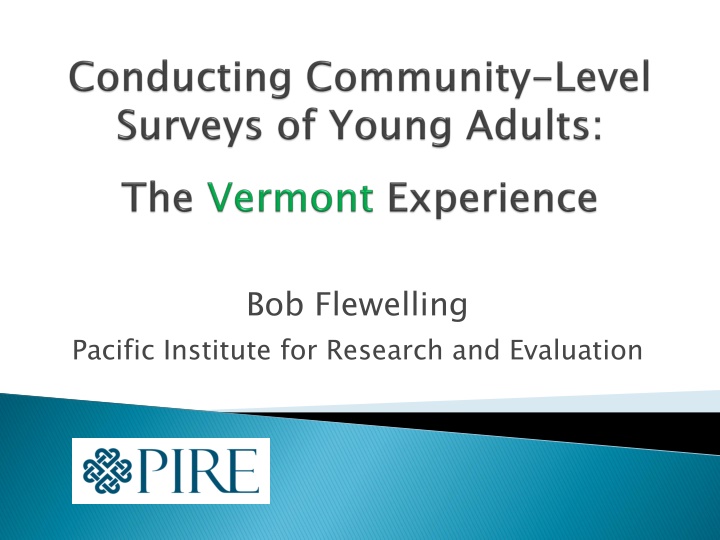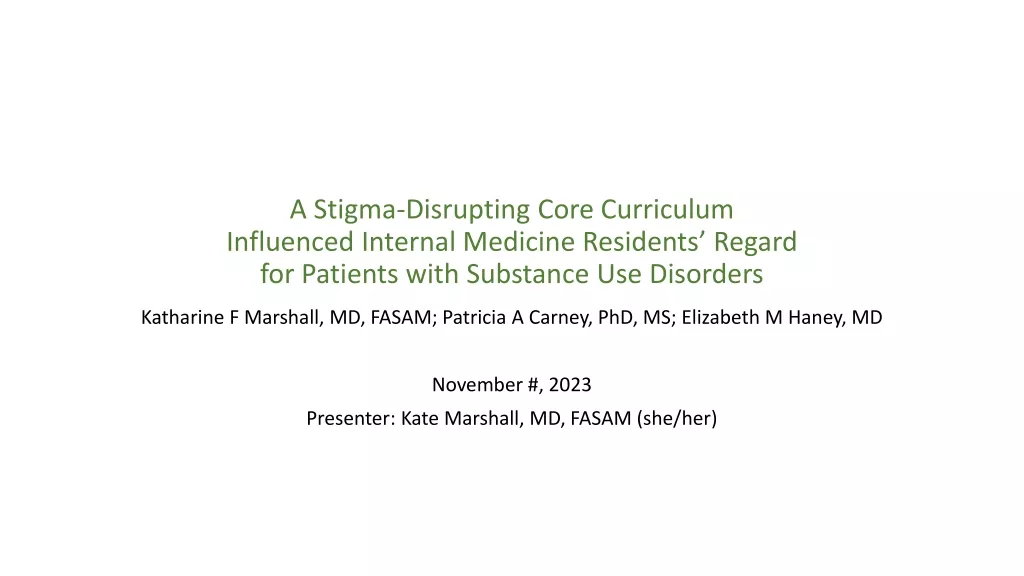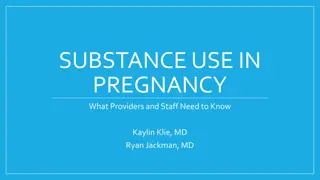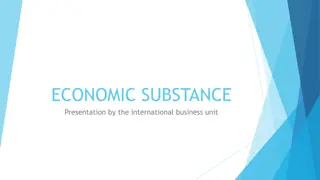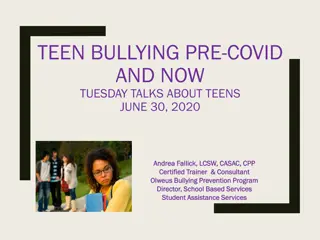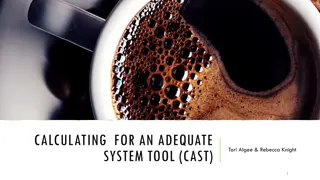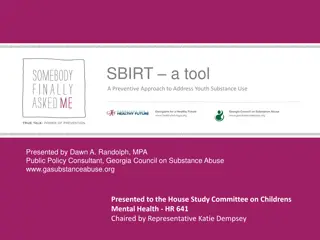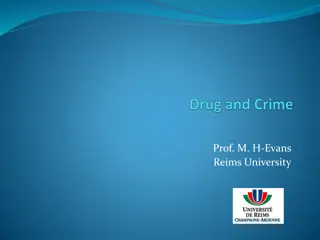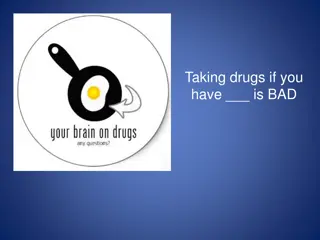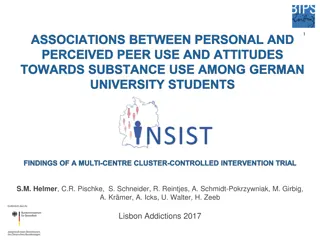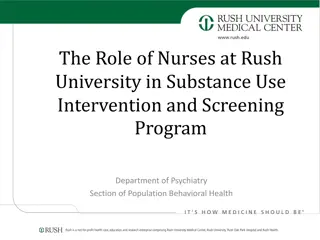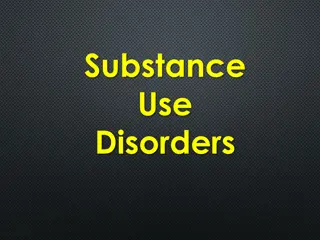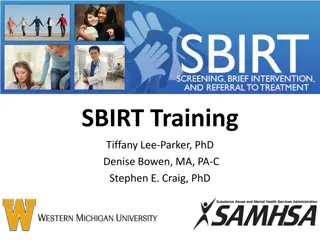Enhancing Substance Use Data Collection for Community Evaluation
Explore the importance of community-level data for substance use evaluations, the challenges with existing surveys, and the benefits of standardized survey methods. Discover the potential of targeted invitations and the significance of high response rates in data collection efforts.
Download Presentation

Please find below an Image/Link to download the presentation.
The content on the website is provided AS IS for your information and personal use only. It may not be sold, licensed, or shared on other websites without obtaining consent from the author.If you encounter any issues during the download, it is possible that the publisher has removed the file from their server.
You are allowed to download the files provided on this website for personal or commercial use, subject to the condition that they are used lawfully. All files are the property of their respective owners.
The content on the website is provided AS IS for your information and personal use only. It may not be sold, licensed, or shared on other websites without obtaining consent from the author.
E N D
Presentation Transcript
Bob Flewelling Pacific Institute for Research and Evaluation
Highest prevalence rates for most substances Existing surveys do not provide community- level data Also: Young adults are often a mandated target population age group for funded initiatives Data are needed/required for evaluation
A single statewide survey state controlled Locally controlled surveys
Greater levels of involvement, buy-in and ownership of the data Facilitates state-community partnership Communities may make greater use of the data
Standard survey content and methods applied across all communities (and over multiple years) Allows community organizations to focus on other tasks Can also be used to develop state- community partnership (over time)
Phone Paper and pencil Other modes Online
Easy and inexpensive to distribute Can potentially reach very large number of respondents Built in branching, skip patterns, and consistency checks Simplifies data management
1) Targeted invitations to individuals 2) Open invitations (i.e. advertising) to targeted subgroups
1) 62 percent 2) 76 percent 3) 87 percent 87 percent Answer: 87 percent
CSAP encourages grantees to strive for 70% response rate in community-level surveys 70% But Response rate cannot be calculated surveys using an open invitation to all eligible respondents cannot be calculated for
N of completed surveys N of completed surveys N of persons invited N of persons invited Pseudo response rate Pseudo- - response rate How determined How determined All age-eligible residents All age-eligible residents who use Facebook All persons who clicked on the survey link 4.4% 4.4% 3200 3200 72,106 5.1% 5.1% 3200 3200 62,732 50.4% 50.4% 3200 3200 6,350
N of completed surveys N of completed surveys N of persons invited N of persons invited Pseudo response rate Pseudo- - response rate How determined How determined All age-eligible residents All age-eligible residents who use Facebook All persons who clicked on the survey link 4.4% 4.4% 3200 3200 72,106 5.1% 5.1% 3200 3200 62,732 50.4% 50.4% 3200 3200 6,350
Young Adult Survey (2014) Young Adult Survey (2014) NSDUH (2012 NSDUH (2012- -13) Measure Measure 13) Alcohol use in past 30 days Binge drinking in past 30 days Alcohol use in past 30 days Binge drinking in past 30 days 74.7 74.7 69.3 69.3 55.3 55.3 45.1 45.1 Marijuana use in past 30 days Non Rx pain relievers in past year Marijuana use in past 30 days Non- -medical use of Rx pain relievers in past year 37.3 37.3 28.7 28.7 medical use of 7.4 7.4 9.1 9.1 1Weighted by gender, age group, and county
Data from individual years: State-level data for assessment and planning Community-level data for assessing and planning Data from multiple years: State and community-level data for tracking changes in outcome measures over time Data from individual years: Data from multiple years:
State Level: 1. Statewide tables showing distributions of all items by age group, gender, and student status 2. Statewide Report (10 pages plus ES) 3. One-page fact sheet County Level: 1. County-specific tables for PFS community grantees (comparing county on each item to remainder of state) State Level: County Level:
1. Heroin and/or other hard drugs, addiction, or drug-related crime is a problem (either statewide or in community) 2. Marijuana is not harmful and/or should be legalized 3. Liked the survey / thanks for doing this
Bob Flewelling flewelling@pire.org To access the survey (no data will be recorded), go to: http://ncweb.pire.org/vtsurvey and click on the word survey in the graphic at the top of page. To access statewide report, go to: http://www.pire.org/documents/Vermont_PFS_Eval/VT_PFS_YAS 2014_Summary_Report.pdf
